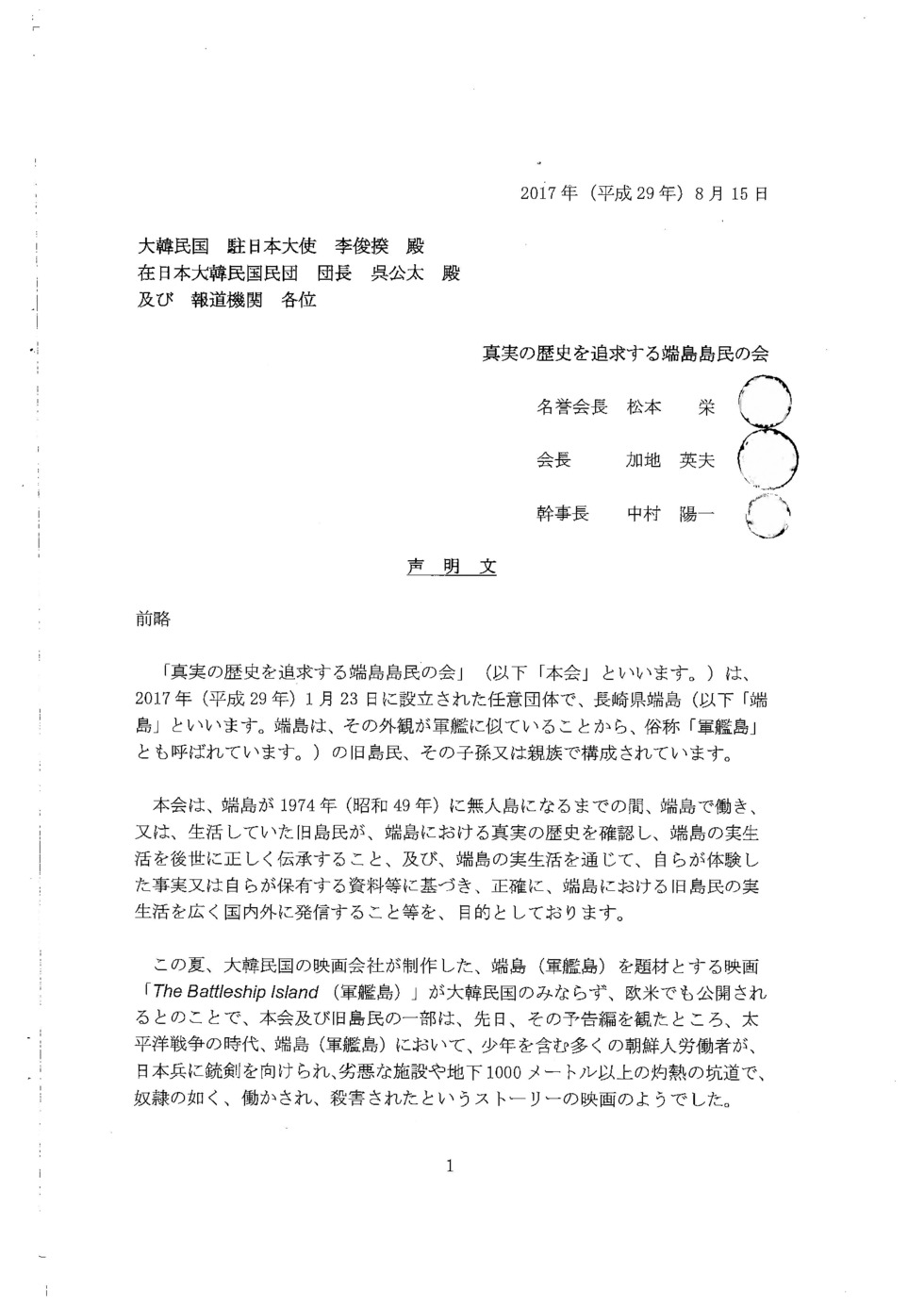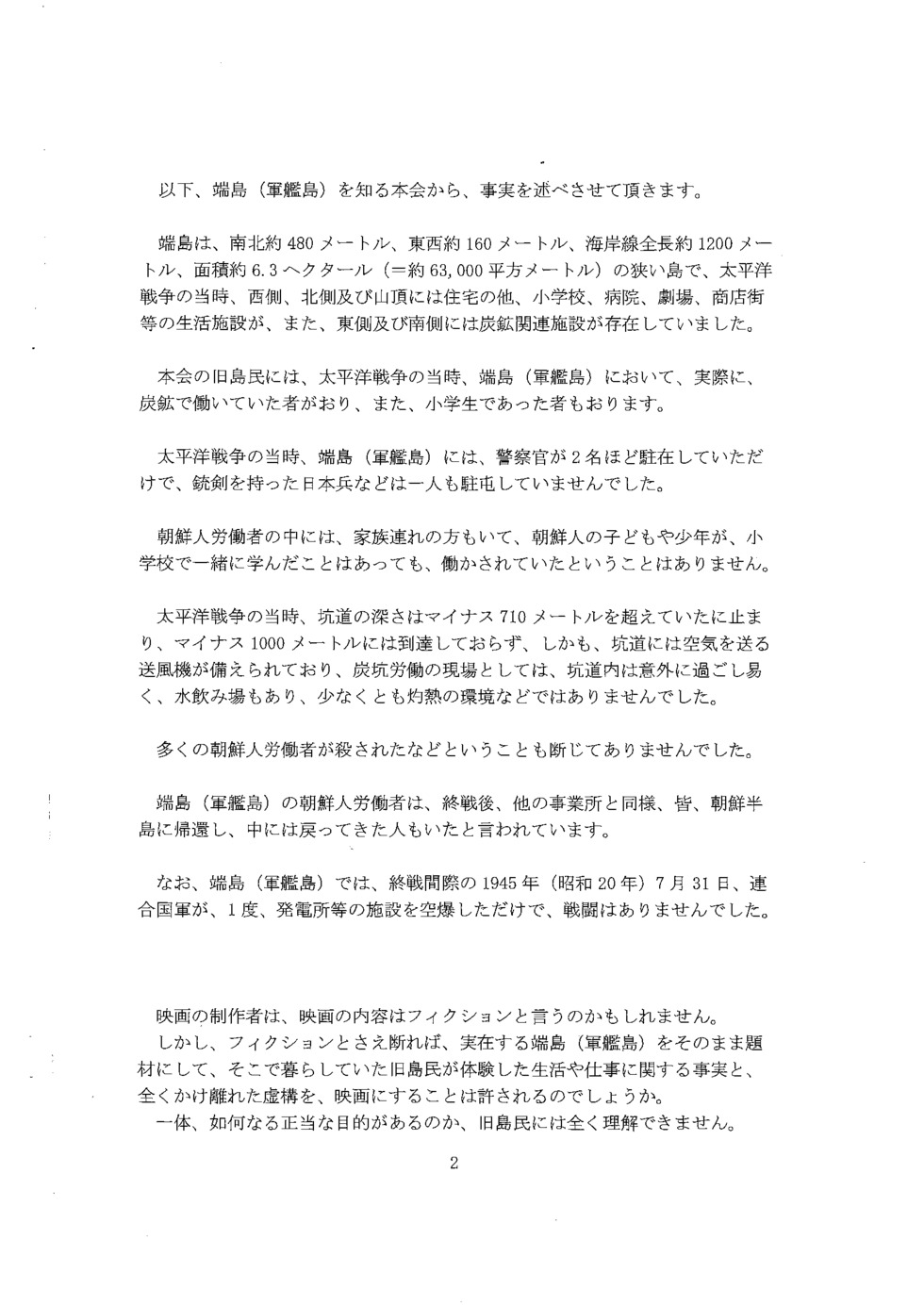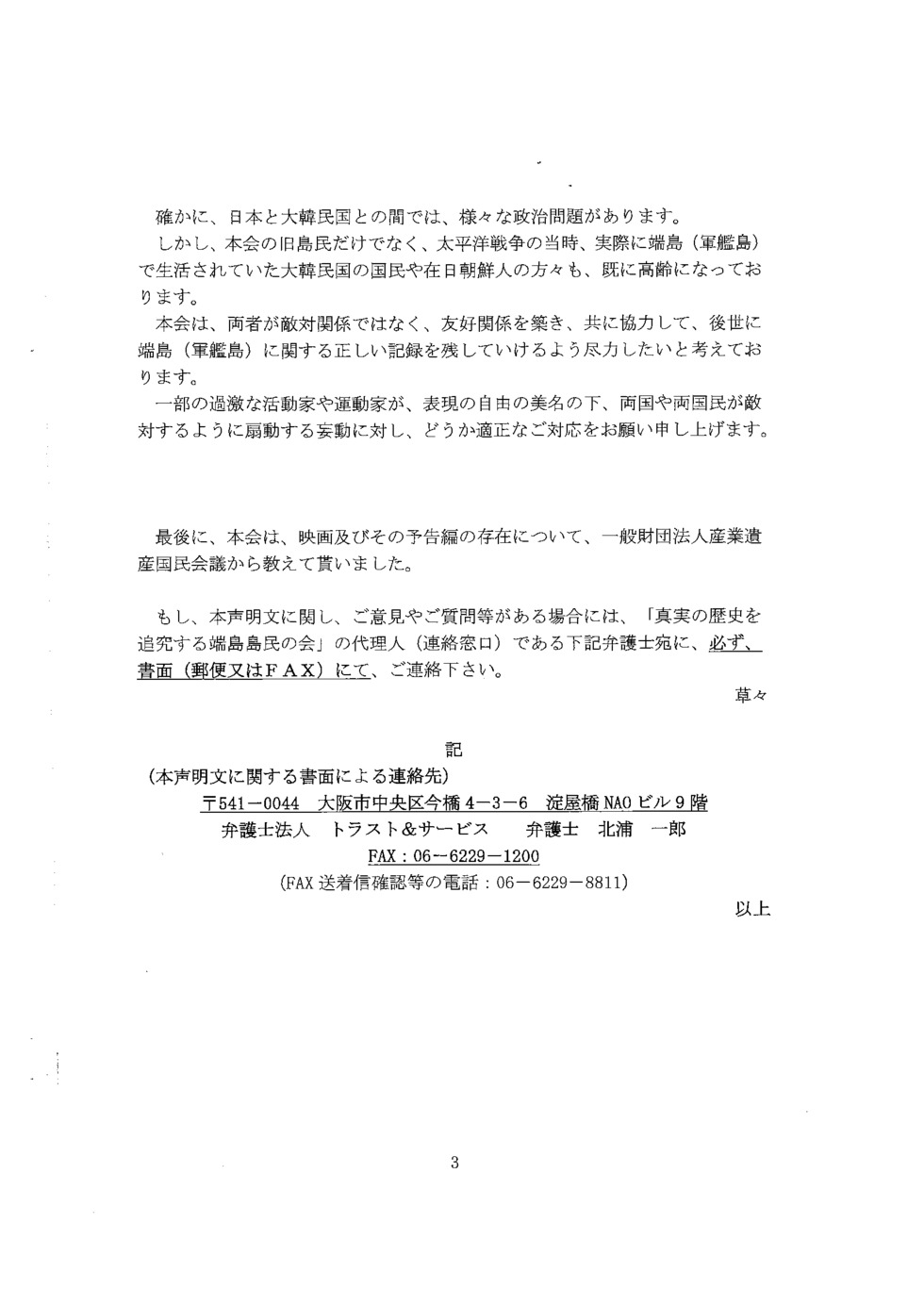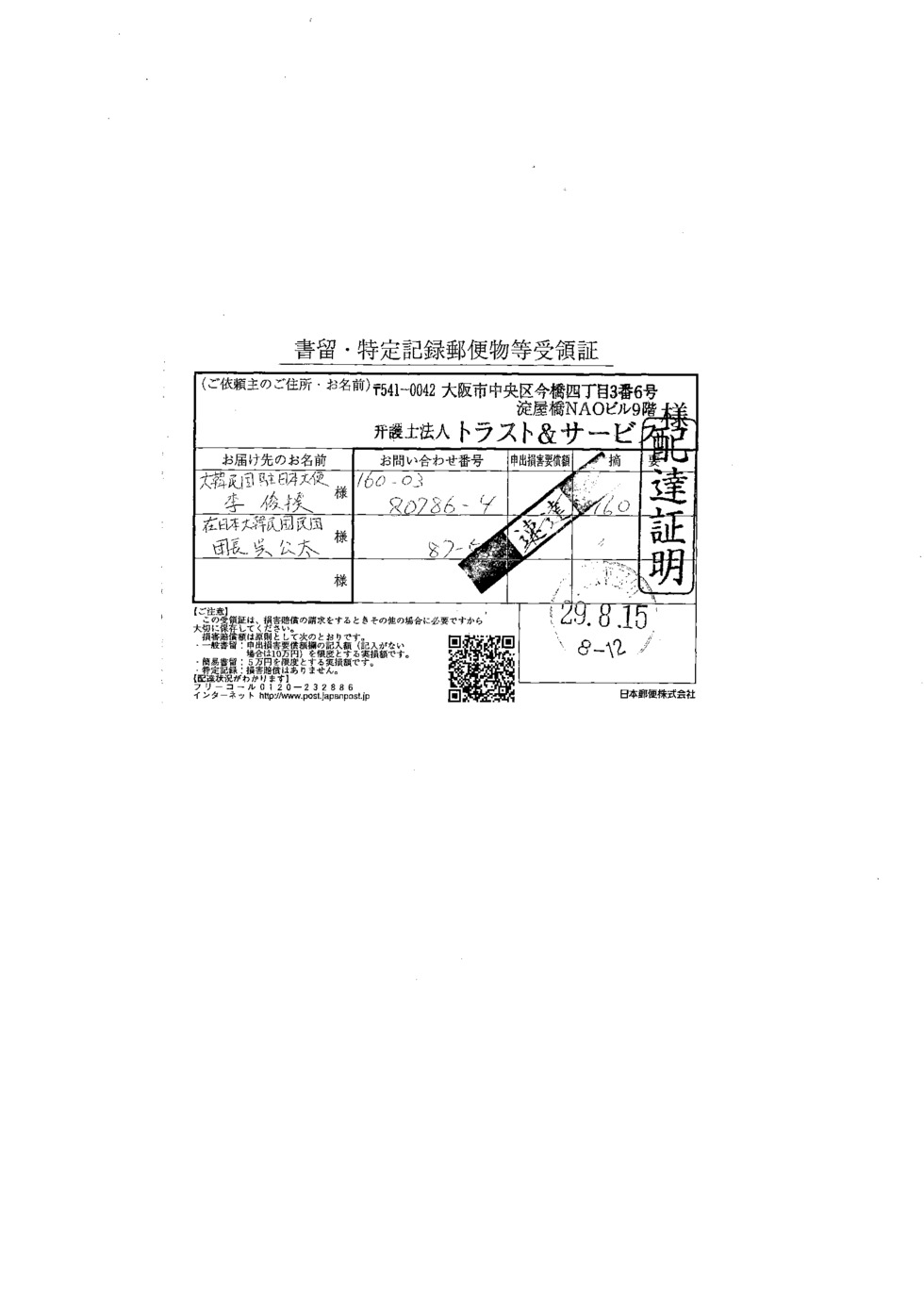Statement against the fictional Korean movie, “The Battleship Island”
The “Hashima Islanders for Historical Truth” published a statement against the trailer of the fictional Korean movie, “The Battleship Island” on August 15th, 2017.
- Author
- 真実の歴史を追求する端島島民の会
Page 1
Page 2
Page 3
Page 4
Hashima Islanders for Historical Truth
Sakae Matsumoto, Honorary Chairman
Hideo Kaji, Chairman
Yoichi Nakamura, Chief Secretary
Statement
The “Hashima Islanders for Historical Truth” (hereafter “our group”) is a private organization that was founded on January 23, 2017, by former residents of Hashima Island, Nagasaki Prefecture (hereafter “Hashima” – commonly known as Gunkanjima, or Battleship Island, due to its resemblance to a battleship), their descendants, and relatives.
The goal of our group is to disseminate accurate information, domestically and internationally, regarding the livelihoods of the people on the island, based on facts experienced by islanders and preserved documents; and to correctly pass on real-life experiences of the islanders to future generations, by verifying the truth about the history of the island, and of the people who lived and worked there, until the island became uninhabited in 1974.
Upon hearing that the film “The Battleship Island”, created by a South Korean film company, is scheduled to be released this summer in South Korea, Europe, and the United States, some members of our group, including former residents of the island, watched the trailer. To the extent of what we saw in the trailer, the film depicts the lives of the many Korean workers, including young boys, who lived in Hashima during the Pacific War. In it, they are forced to work like slaves at gunpoint by Japanese soldiers, under atrocious conditions - in burning mining galleries more than 1,000 meters underground - at times getting killed.
In contrast, below is our group’s description of the facts about the island.
Hashima is a small island, approximately 480 meters long North to South and 160meters long East to West; it has 1200 meters of shoreline and an area of approximately 6.3 hectares (=approx. 63,000 square meters). At the time, on the West side, North side, and on the mountaintop, there were homes, an elementary school, a hospital, a theater, and other community facilities, including a shopping street. On the East side and South side of the island, there were mining-related facilities.
Former residents of our group include those who have worked in the coal mines on Hashima during the Pacific War, as well as those who were students at the elementary school at the time.
During the Pacific War, two police officers resided on the island; not a single Japanese soldier carrying a weapon was stationed on the island.
Some of the Korean laborers had families with children; thus, Korean children studied at school alongside the Japanese children. There is no truth that any of these children were forced to work.
The depth of the mining gallery during the War was –just over 710 meters and it did not reach 1,000 meters. Fans were installed to supply air to the gallery, and drinking fountains were furnished for the workers. The working environment was not unduly harsh for a mining gallery– it was certainly not burning, as depicted in the trailer.
There is absolutely no truth that many Korean workers were killed during this time.
After the War, Korean laborers who worked in Hashima were returned home to the Korean Peninsula, just as others were from other locations; some are even said to have subsequently come back to Hashima.
Furthermore, although near the end of the War, on July 31st, 1945, the Allied Forces carried out an airstrike on power plants and other facilities in Hashima, no battle took place on the island.
The creators of the movie may say that the story depicted in the movie is fiction.
However, is it acceptable to fabricate a story about Hashima, an island that actually exists, and the way people lived and worked there, that is far from the truth, as long as it is labeled as fiction?
Former islanders cannot find any justifiable reason for creating such a misleadingfilm.
It is true that there are many political issues between Japan and South Korea today.
However, everyone who actually lived or worked there, including former residents of our group, and the Korean people who have since become citizens of South Korea or are currently residing in Japan, has aged.
Our group’s hope is for both sides to build a friendly relationship, not a hostile one, and to work together to pass on an accurate account of history of Hashima for future generations.
We sincerely hope that you will respond appropriately to these extreme activists, who only make up a small portion of society, who, under the pretext of freedom of speech, instigate hostility between the two nations.
Finally, we would like to mention that our group was informed of the existence of this film and its trailer by the National Congress of Industrial Heritage (general incorporated association). For questions and / or opinions regarding this Statement, please kindly contact the attorney below, who represents the “Hashima Islanders for Historical Truth”, in writing by postal mail or fax.






